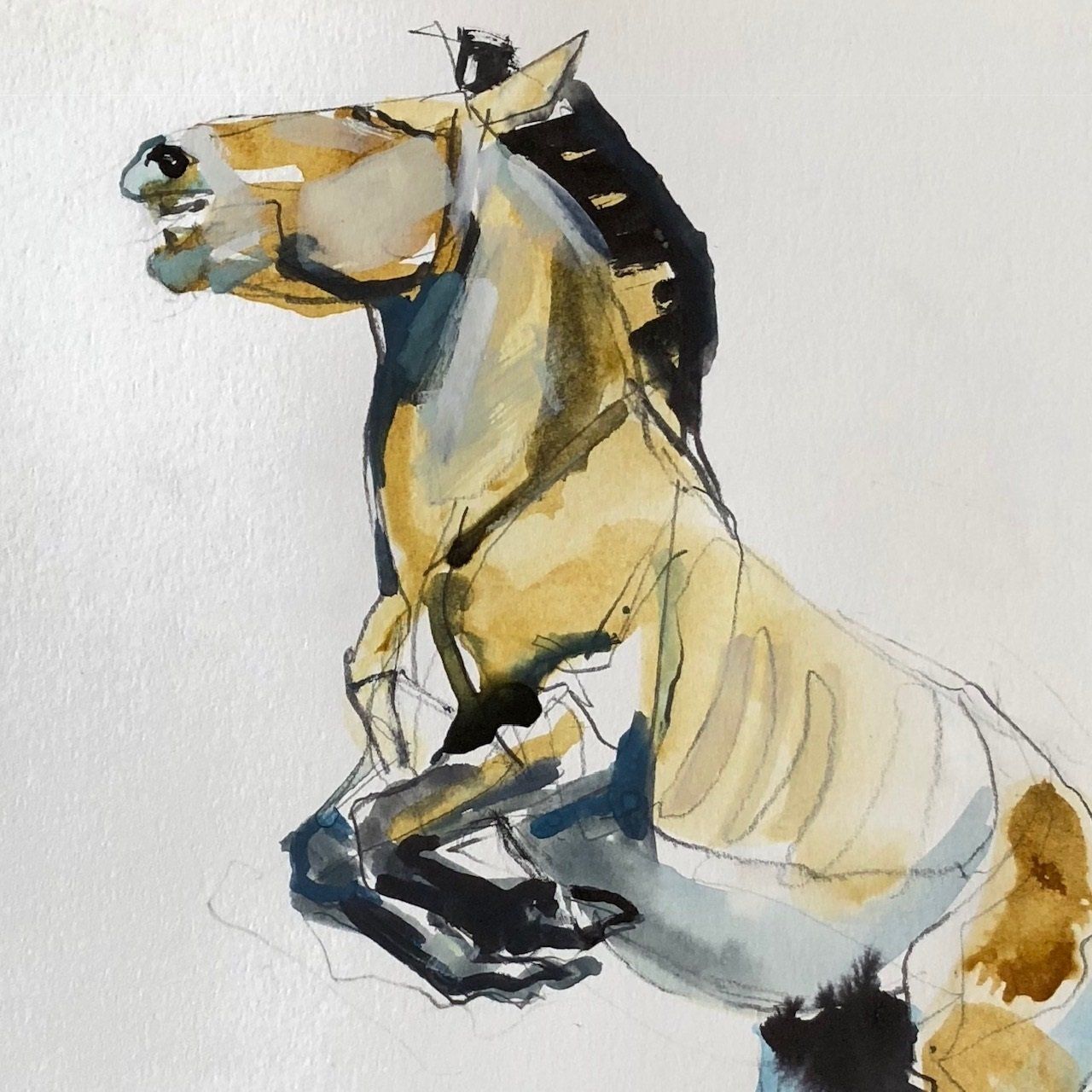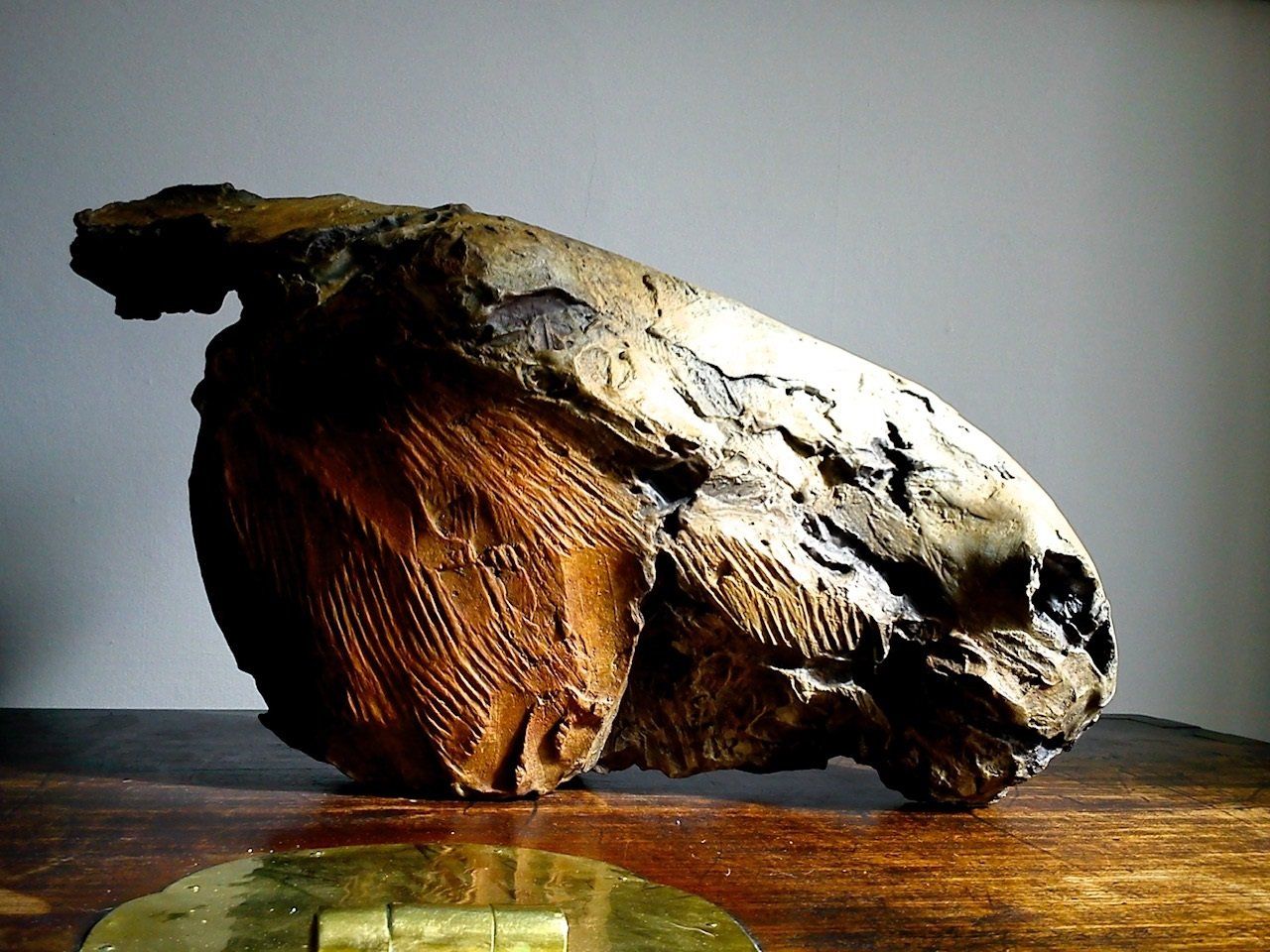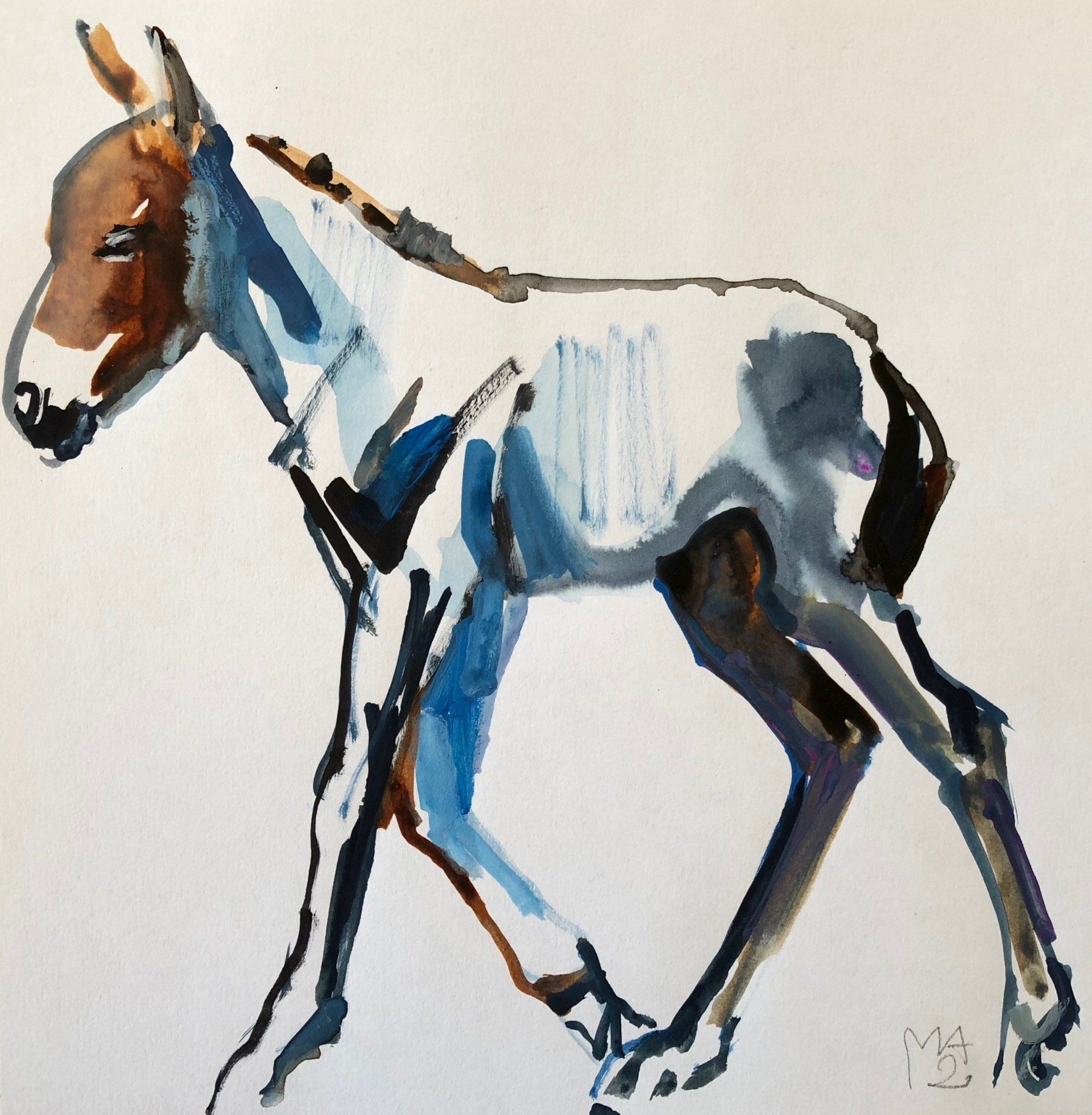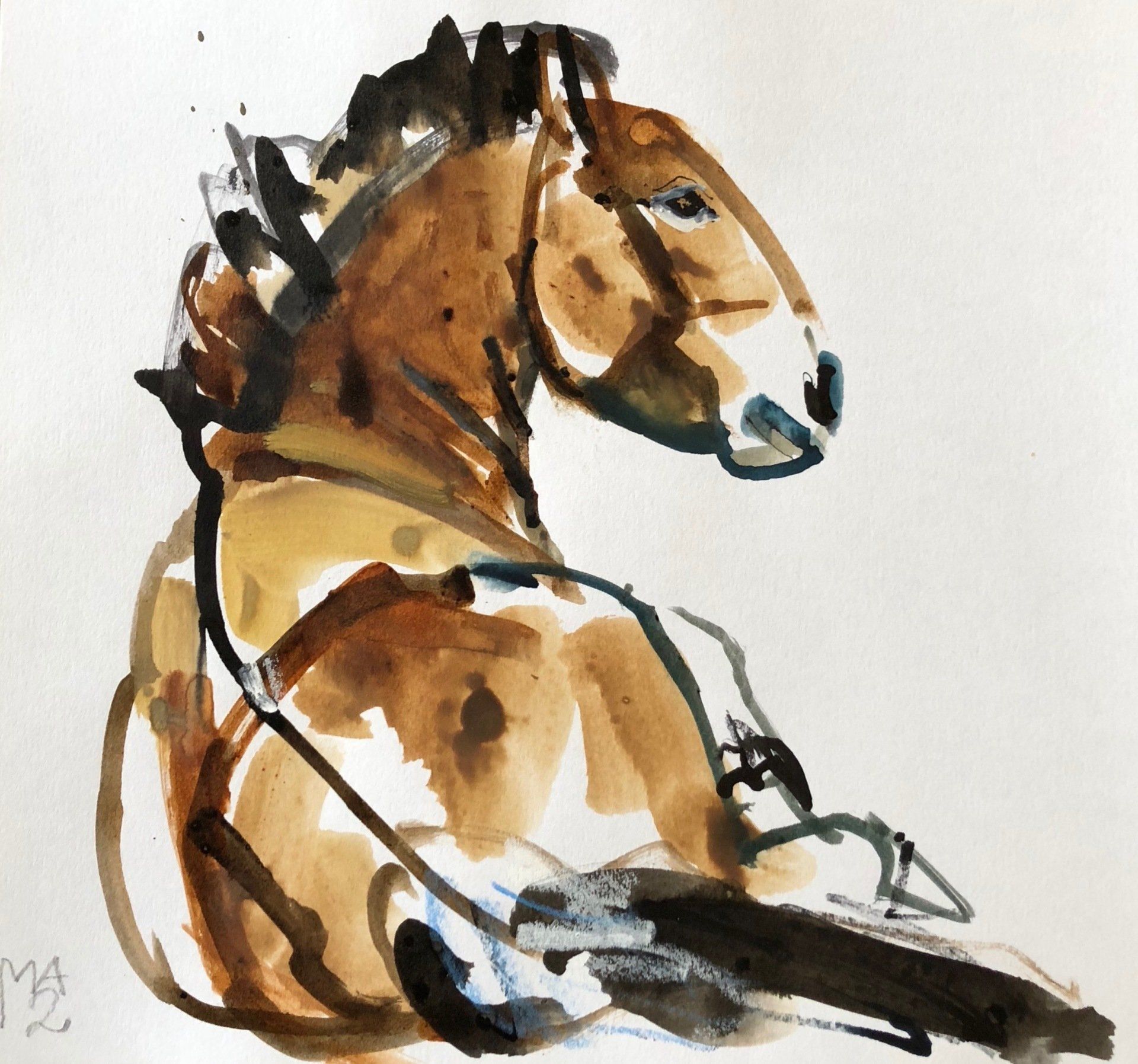MARK ADLINGTON - PRZEWALSKI'S HORSE Currently available for viewing
We are delighted to be showing art by wildlife artist and sculptor Mark Adlington.
This collection of work is Mark's two year study of the wild Przewalski Horses.
Viewing is by appointment only, please
contact us to arrange your visit - everyone welcome.
ABOUT MARK ADLINGTON
Mark Adlington is a London based artist who travels extensively in search of the wildlife which has been his principal obsession since early childhood. He works largely on site before returning to the studio to try and recreate the immediacy of his responses to the animals using various and often mixed media. Mark exhibits regularly in London and abroad, and occasionally works to commission. He is represented by the John Martin of London Gallery in Mayfair, and by the Bridgeman Art Library
Przewalski's Horse
Przewalski's Horse, the world's only surviving wild horse, was discovered in a remote region of Mongolia in the 1880s. The story of its subsequent extinction in the wild, successful preservation through captive animals, and recent reintroduction, is dramatic and pertinent, but for me the resonances of this sturdy muscular equid reverberate well beyond this, in scope, geography, and time.
The very keen interest in the horse nearly a century after its demise as an essential part of British daily life for transport, agriculture, industry and war, is evidence of its strong hold on the human psyche. However more than 25,000 years before the horse was even domesticated, mankind was inspired to paint, sculpt, carve and engrave horses – the horse (along with the bison) appears more often than any other subject in palaeolithic art . These ancient images have long been thought to be purposefully distorted exaggerated and imagined. In point of fact nothing could be further from the truth. After two years studying Przewalski Horses in the wild, the clarity of observation and accuracy of draughtsmanship of our earliest ancestors is increasingly obvious to me. This is hardly surprising; an understanding of wild animals, as prey and predator was totally key to the survival of palaeolithic man. They would have observed wild horses with keen interest, noting all behavioural characteristics to increase their chances of a successful hunt, and would then have regularly flayed and butchered the carcasses for meat and hide. Nobody would have had a better visual grasp of animal anatomy than early man.
EXAMPLES OF FEATURED WORKS
Join us and become aFRIEND OF THE COMPTON
If you would like to be one of the first to find out about our upcoming art exhibitions, exciting events and craft based workshops, please subscribe now.
Don't worry, we will not bombard you, you can choose what type of information we send and you can unsubscribe at anytime.
ABOUT US
The Compton Gallery (Glos) Ltd.
Combining our love of the arts, passion for design and enthusiasm for fine cuisine we offer a unique multi-use venue available for hire and for Pop-up events.
FIND US
Cassey Compton House, Cassey Compton, Withington,
Cheltenham, GL54 4DE
✉ enquiries@thecomptongallery.com
☏ (+44) 01242 506518
☏ (+44) 07775 777786




